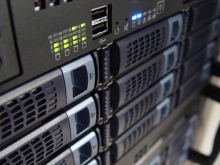'ZDNET Recommends': What exactly does it mean?
ZDNET's recommendations are based on many hours of testing, research, and comparison shopping. We gather data from the best available sources, including vendor and retailer listings as well as other relevant and independent reviews sites. And we pore over customer reviews to find out what matters to real people who already own and use the products and services we’re assessing.
When you click through from our site to a retailer and buy a product or service, we may earn affiliate commissions. This helps support our work, but does not affect what we cover or how, and it does not affect the price you pay. Neither ZDNET nor the author are compensated for these independent reviews. Indeed, we follow strict guidelines that ensure our editorial content is never influenced by advertisers.
ZDNET's editorial team writes on behalf of you, our reader. Our goal is to deliver the most accurate information and the most knowledgeable advice possible in order to help you make smarter buying decisions on tech gear and a wide array of products and services. Our editors thoroughly review and fact-check every article to ensure that our content meets the highest standards. If we have made an error or published misleading information, we will correct or clarify the article. If you see inaccuracies in our content, please report the mistake via this form.
Adaptec Snap Server 210


Adaptec Snap Server 210
pros and cons
The Snap Server 210 makes for a very tightly integrated and low maintenance backup system over WAN, but is pricier than many other solutions.
The Snap Server 210 is the first of Snap's smaller appliances to incorporate their Enterprise Data Replication (EDR) and disaster recovery features. Up until now, these features were only available in their larger appliances such as the 650.
EDR allows Snap appliances to replicate and distribute data between them automatically, in a number of ways. This can be done purely for backup and disaster recovery or as a mechanism to automatically distribute new content. It is important to note that EDR is not intended to be used to synchronise files where users might edit them from multiple locations simultaneously. EDR jobs can only be scheduled by time and not by triggers or events.
Adding these new EDR features to the 210 is a good move because it is a good unit for a small business needing a file server and if you happen to be part of a large network of stores or offices where data may have to be replicated or backed up to head office, EDR comes into its element with easy to set-up replication with encryption, even over dial-up connections. A prerequisite for EDR to function is that a master server has to be in the chain somewhere in the organisation and it has to be one of the higher end units such as the Snap Server 650.
How We Tested
To test disk performance, we ran Spec's SpecSFS Linux based network file server benchmark which uses NFS file sharing to benchmark servers. We looked at all the features offered by the Snap Server 210 as well as ease of use, set-up and configuration.
What's inside
The Snap Server 210 is a very small unit slightly larger than a box of tissues. It sports a gigabit network interface and USB ports for UPS interaction. The device itself is very simple with a single button to power the unit on and off. All other interaction is done via the Web interface.
The Web interface is very well thought out and for a little device, there are a lot of options and features at your disposal. As with most Snap appliances, file sharing for Linux, Mac and Windows clients is supported. You create users and set permissions as you would on any OS Server product. For larger organisations, Active Directory integration is supplied as standard.
Top ZDNET Reviews
The Snap Server 210 comes in two configurations, a 500GB and 1000GB models. The drives can be configured in either RAID 0 for speed and maximum available space and RAID 1 mirroring for redundancy which also halves the total available space.
When we benchmarked the Snap Server 210's disk performance, the performance was a little low at 218 NFS operations per second using SpecSFS. This is not surprising as the unit is only running a 1.3 GHz processor and has 256MB of RAM. Previous tests we have done with low- to mid-level servers tend to start around the 500 NFS ops/sec mark. While the performance is a little average, Snap never intended this unit to be a multimedia file serving work horse. It is clearly aimed at the branch or satellite office with low to mid number of users pushing around Microsoft Office documents.
There is also a range of optional extras such as EDR, iSCSI and backup agents which can all be loaded onto the device through the web interface. Products such as EDR come with a time limited free trial to experiment with its functionality but to use them permanently, a licence will have to be purchased to activate it.
Verdict
We really like the functionality and user interface of the Snap Server 210. Our only major complaint is that Snap's solution is pricier that many other solutions. The extra cost can be justified with its compatibility across different client operating systems and with the options EDR and iSCSI functionality in combination with a master Snap Server makes for very tightly integrated and low maintenance backup system over WAN.
It is also important to keep in mind that you are also purchasing a product which requires very little maintenance unlike using a server with an operating system and this is another reason to choose a product like this over a computer with a bunch of disks.
| Product | Snap Server 210 |
|---|---|
| Price | AU$2,099 (500GB), AU$3,445 (1TB) |
| Vendor | Adaptec |
| Interoperability | |
| Works with Linux, Windows and Mac protocols. Also supports Active Directory, user permissions and many different types of security. | |
| Futureproofing | |
| Uses a Gigabit NIC and has USB ports for integration with UPS devices. Software and firmware upgrades are available from the Snap Server Web site. | |
| ROI | |
| Features are impressive and it is a well designed product but is expensive. Return on investment is more reasonable if you take into account the lower maintanence and EDR features compared to a standalone server if your business can benefit from these features. | |
| Service | |
| Three year back to base warranty and 30 days software phone support. Knowledgebase is available online and different higher level support packages available at extra cost. | |
| Rating |